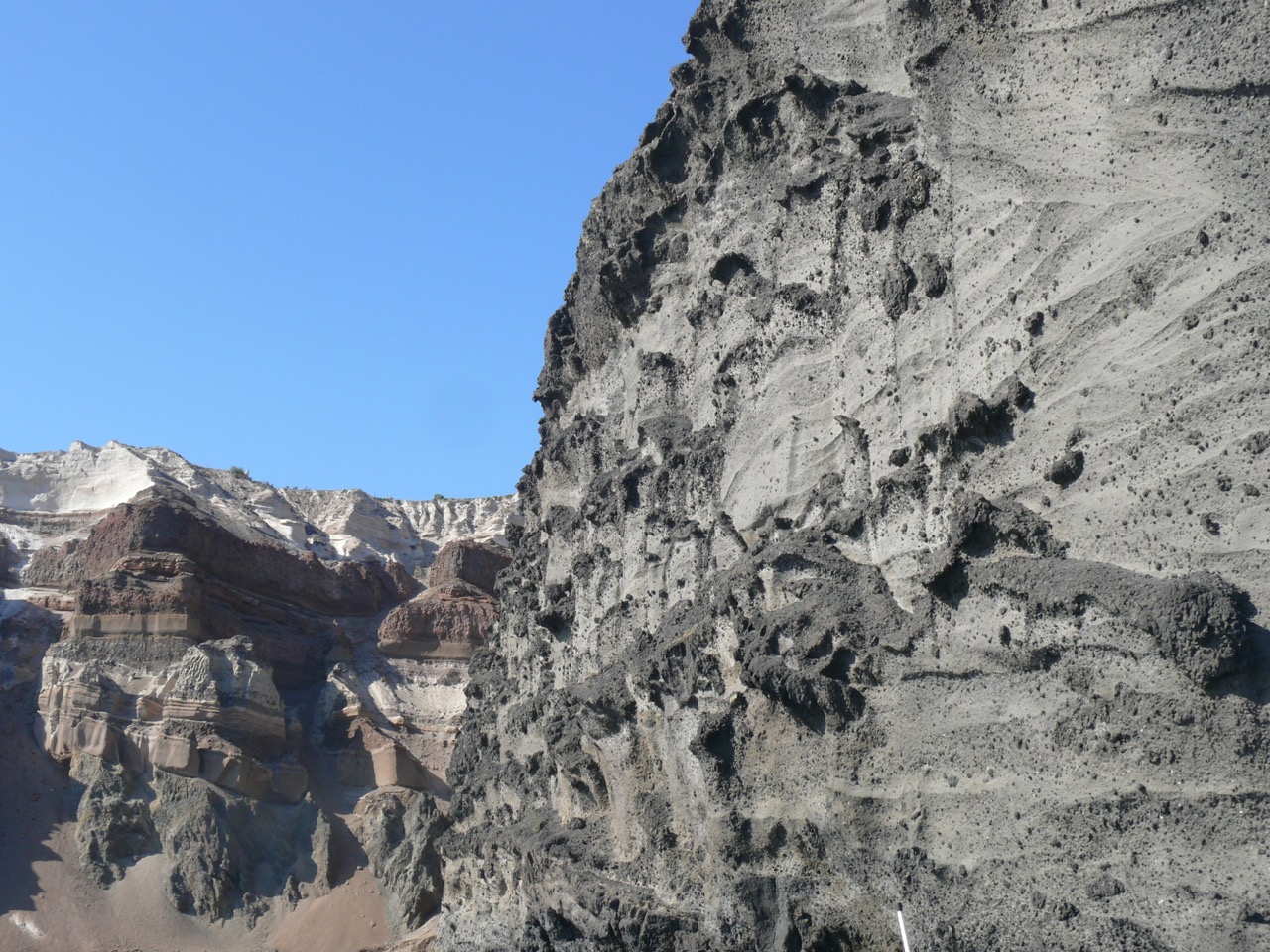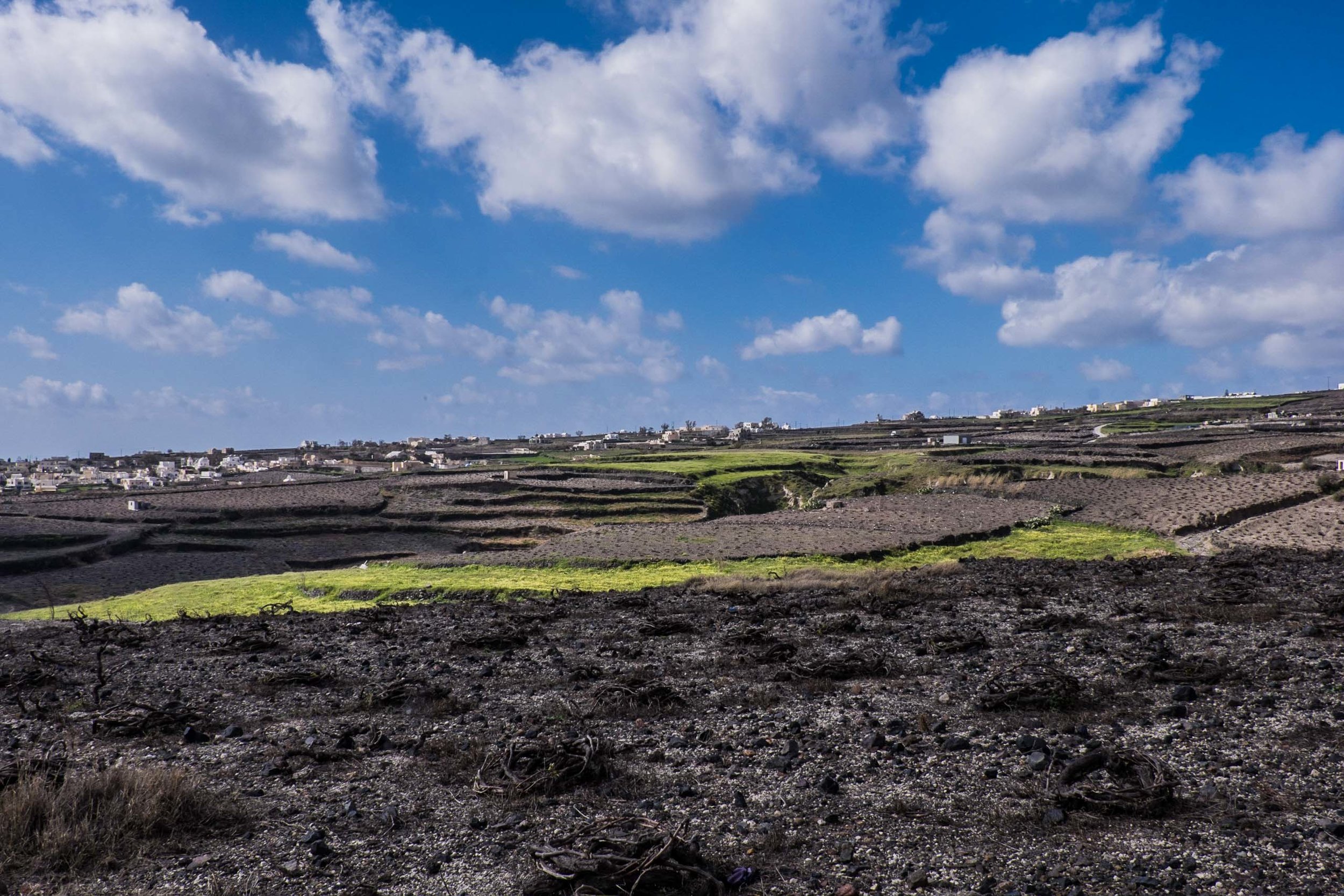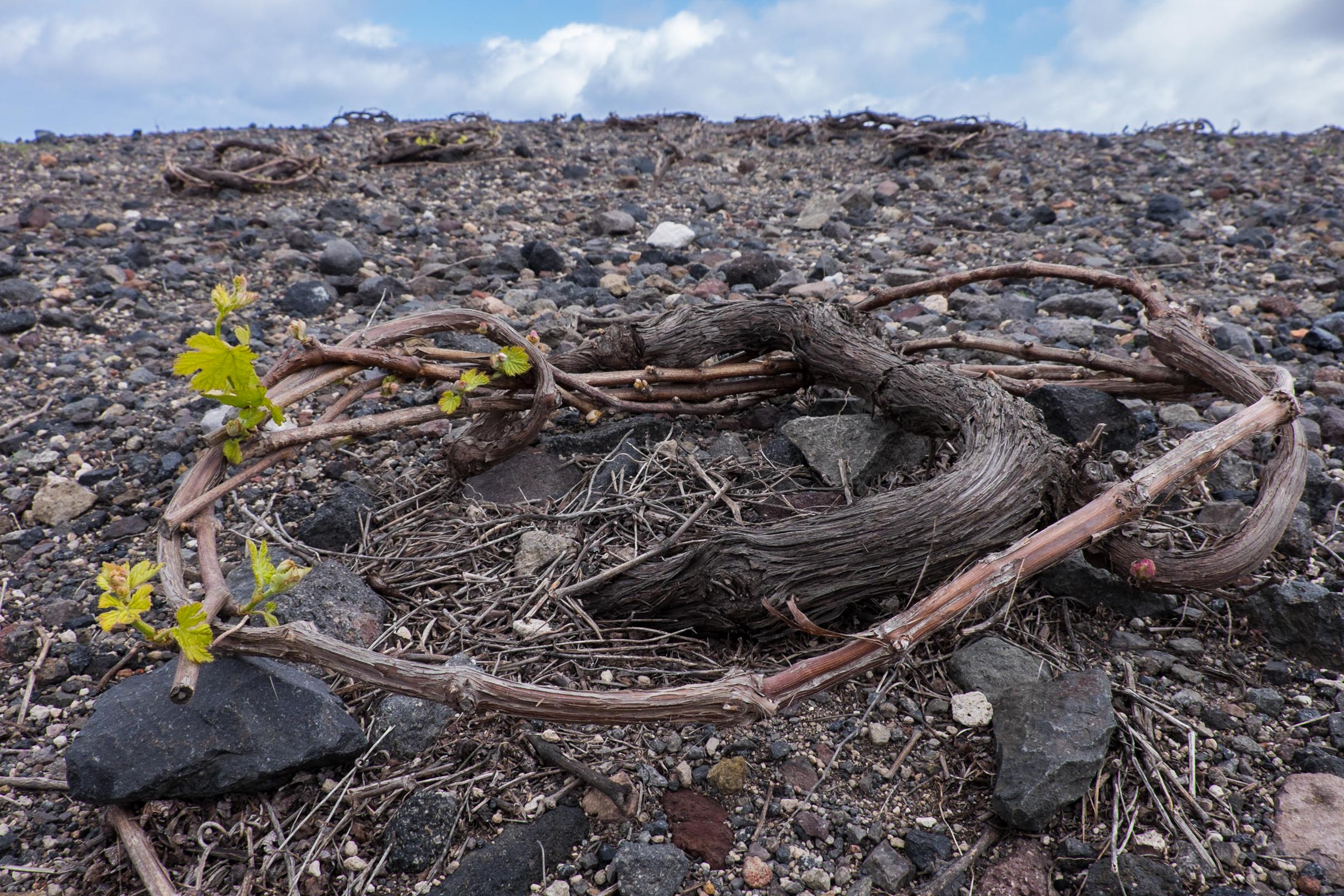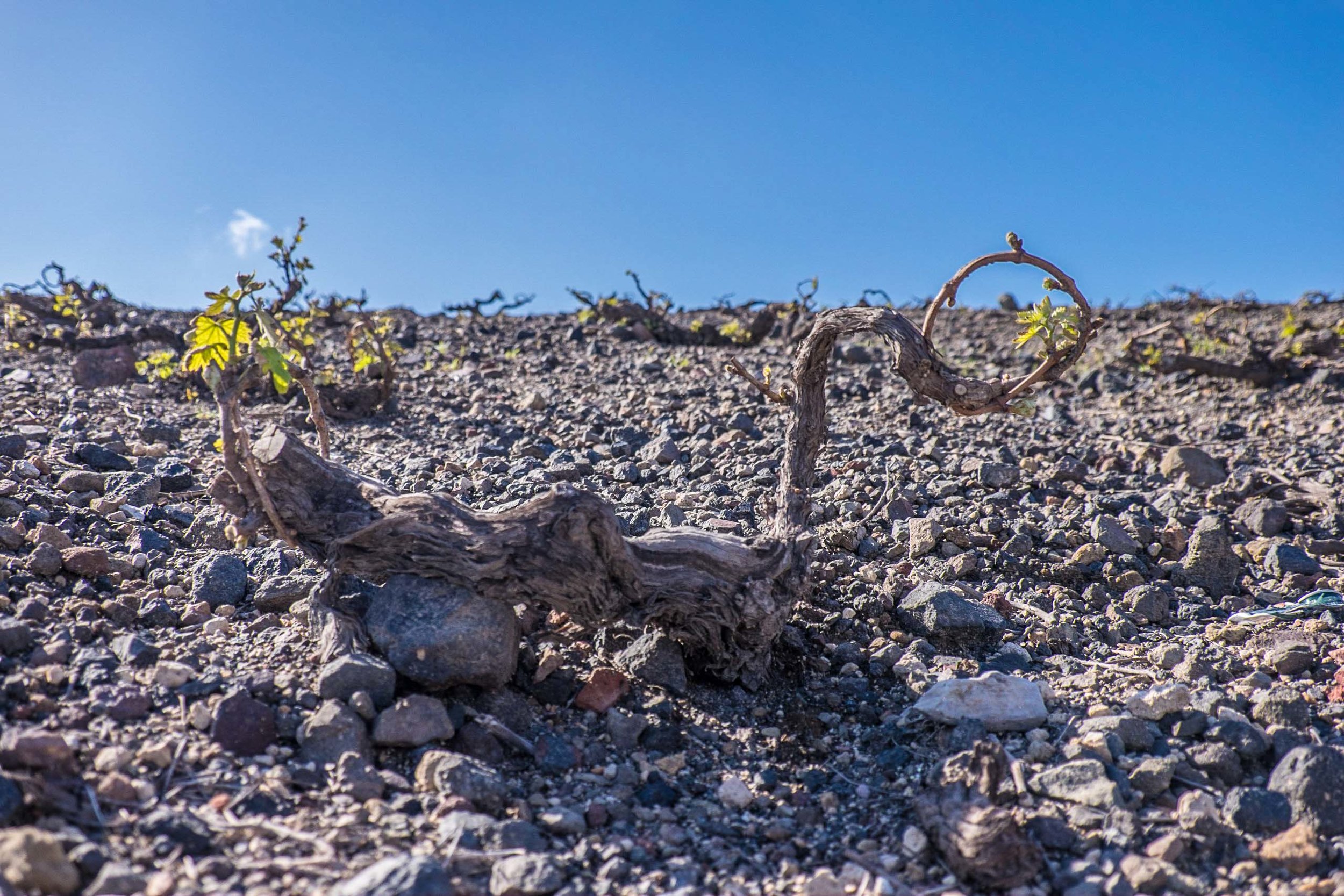
GREECE
SANTORINI
Picture-perfect Santorini, or Thera to the Greeks, is part of the Cyclades, a south Aegean archipelago of some 220 islands that also includes Naxos, Mykonos, and Paros. The islands are the limestone peaks of a submerged mountain chain, with the exception of Santorini and Milos, which are volcanic peaks that were formed along the South Aegean Volcanic Arc. Santorini has been a prolific wine producer for at least 3700 years, as witnessed by winemaking artifacts unearthed at Akrotiri, a late bronze-age city preserved under a thick layer of ash from the island’s legendary eruption in the 17th century bc.
In the distant past there were as many as 50 varieties grown on Santorini, when grapes were virtually the only commercial crop and blanketed the island. Now just three white grapes dominate production, grown mainly in the south around the villages of Pyrgos, Megalochori, and Akrotiri. Assyrtiko occupies three-quarters of Santorini’s vineyards, selected over centuries for its thick, resistant skins, ability to retain high acids even at high alcohol levels, and chart-topping extract. It’s considered one of Greece’s finest white varieties. It’s likely the wines that made Santorini’s past fortunes, able to survive long sea voyages, were based largely on Assyrtiko. By law wine labeled as dry PDO Santorini is at least 75% Assyrtiko, though in practice the percentage is higher. Athiri and Aidani are the other two main varieties.






